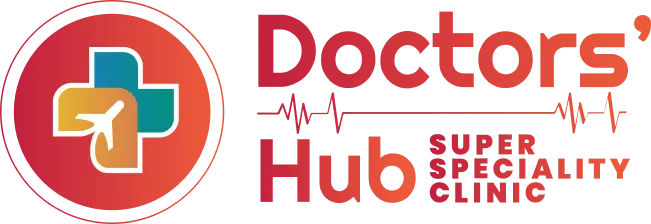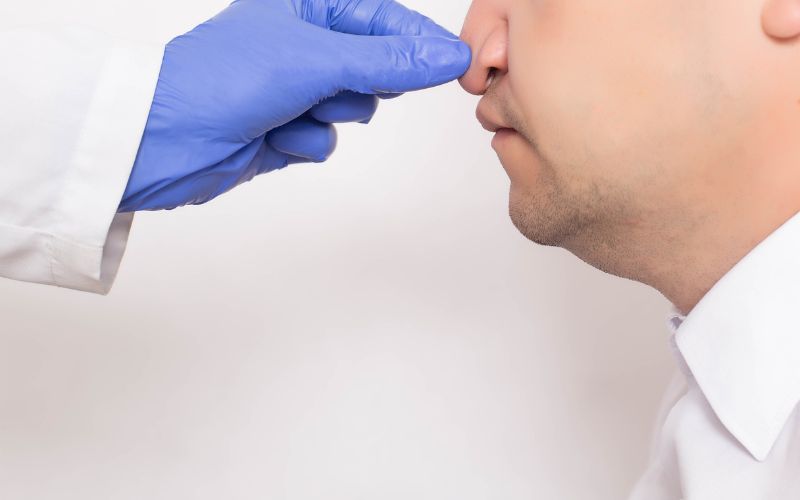Septoplasty is a form of surgery that treats people who have difficulty breathing through their nose. Inside your nose, a wall known as the septum separates it into two sides. This wall is not always straight, which can restrict ventilation and make breathing difficult. It can cause stuffy noses, frequent nosebleeds, and even sinus infections. Septoplasty is a technique that straightens the septum, allowing more air to pass through your nose. This operation improve your breathing and general comfort.
What is septoplasty?
Septoplasty is the surgical correction of anomalies and deformities in the nasal septum explains an ENT doctor in Dwarka (the partition between the nostrils). The septum is a bone and cartilage structure located in the centre of the nose that divides one nasal cavity from another. A deviated septum can narrow one side of the nose and significantly obstruct airflow.
What is the purpose of septoplasty?
Septoplasty is a surgical procedure aimed at fixing a deviated septum. The septum is the wall inside your nose that separates your two nostrils. When this wall is crooked or off-centre, it can cause problems like difficulty breathing through the nose, frequent nosebleeds, or sinus infections.
In simple terms, septoplasty straightens the septum to help you breathe more easily and reduce other related problems.
Who needs a septoplasty?
People with a deviated septum and nasal blockage may require a septoplasty. Additionally, ENT doctors suggest septoplasty to:
- Remove the nasal polyps.
- Treat chronic sinusitis.
- Prevent recurring (chronic) nosebleeds (less prevalent).
- Address any other conditions restricting your nasal passage.
While septoplasty is commonly performed as a standalone procedure, your doctor may recommend septoplasty and turbinate reduction. Turbinate reduction is a treatment in which your surgeon reduces the size of the small bone structures within your nose.
Septoplasty is most commonly used in teenagers and adults. While it is uncommon in young children, your child’s provider may recommend it in certain conditions.
Step-by-step septoplasty surgery in Delhi
The septoplasty procedure has the following steps:
- Anaesthesia: Medicines are given to keep you comfortable during the surgery. There are two options: intravenous sedation or general anaesthesia. Your doctor will propose the best option for you.
- Incision: If a septoplasty is performed alone, the incisions are frequently made within the nasal cavity. For difficult septoplasties or those combined with rhinoplasties, a tiny incision may be made across the columella, the narrow strip of tissue that separates the nostrils.
- Nasal mucosal lining separation: The nasal mucosal lining, or membrane that covers the septum’s surface, is then lifted away from it on one side. It is a key procedure that must be done carefully since the lining is fragile, and lifting the mucosa away from the septum may cause a rip or hole. Similarly, the mucosal lining on the opposite side lifts away from the septum.
- Septum correction: The deviated septum (bone and/or cartilage) is removed, leaving just the unique mucosal lining.
- Incision closure: Once the septum is in the proper position and straightened, the nasal mucosal lining is replaced and sutured back together.
- Results: Splints or packing can be used to stabilise the newly formed septum, and they are removed shortly after surgery. Internal sutures placed during surgery will disintegrate on their own over time.
Risks associated with septoplasty
Although septoplasty is a low-risk treatment, patients should be informed of the potential risks and discuss any concerns with their ent doctor.
The hazards associated with septoplasty include:
- Bleeding: Nasal surgery frequently results in minor bleeding, which most patients tolerate well. In rare circumstances, severe bleeding may occur. In certain cases, the surgeon may have to halt the treatment to avoid putting the patient in additional danger. A packed red blood cell transfusion is rarely required, but a doctor will only administer it in an emergency.
- Infection: Because the nose is not a sterile environment, an infection may develop following a septoplasty.
- Toxic shock syndrome: It is a rare and life-threatening infection that requires rapid treatment.
- Septal perforation: During or after surgery, a tiny hole in the nasal septum may form, particularly in the case of postoperative infection. If the perforation causes bleeding or other issues, the patient may require additional surgery.
How to prepare for septoplasty surgery?
General anaesthesia is frequently required for septoplasty. An anaesthetist puts a patient to sleep during surgery. Surgeons may choose to utilise local anaesthetic and intravenous sedation instead, but only after consulting with the patient.
People should not eat, drink, or chew gum after a particular time the night before the procedure, just as they would for other surgeries that require general anaesthetic.
If necessary, a doctor or nurse will provide further information on when and how to take drugs.
To lessen the chance of bleeding, the doctor will generally ask the patient to stop taking any oral blood thinners for at least a week before surgery. Anyone taking blood thinners or other medications should discuss them with their surgeon.
Is septoplasty safe?
Yes, septoplasty is generally considered safe. Like any surgery, it does come with some risks, but serious complications are rare. The most common risks include bleeding, infection, or a reaction to anaesthesia. However, these are uncommon, and most people recover well without any problems.
Doctors perform septoplasty to help improve breathing and overall quality of life. Before the surgery, your doctor will explain all the possible risks and benefits to make sure it’s the right choice for you. With a skilled surgeon and proper care, septoplasty is a safe and effective way to fix a deviated septum and help you breathe more easily.
Septoplasty is a safe and effective way to fix a deviated septum and help you breathe more easily. While there are some risks, they are generally minor compared to the benefits of improved breathing and comfort. If you are experiencing breathing difficulties or frequent sinus problems, considering septoplasty might be a great step towards a better quality of life.
Take the Next Step: Talk to a ENT Doctor Today!
Visit or call The Doctors’ Hub to understand the condition and learn about other alternatives!













